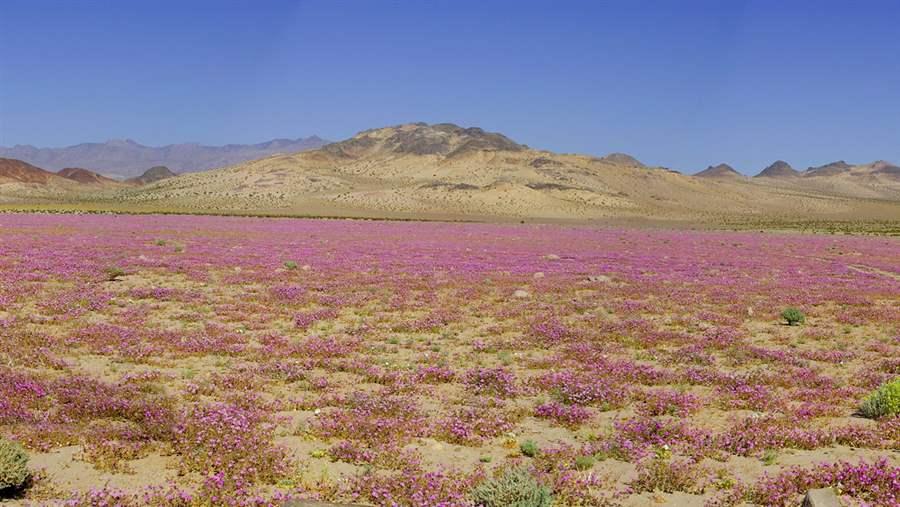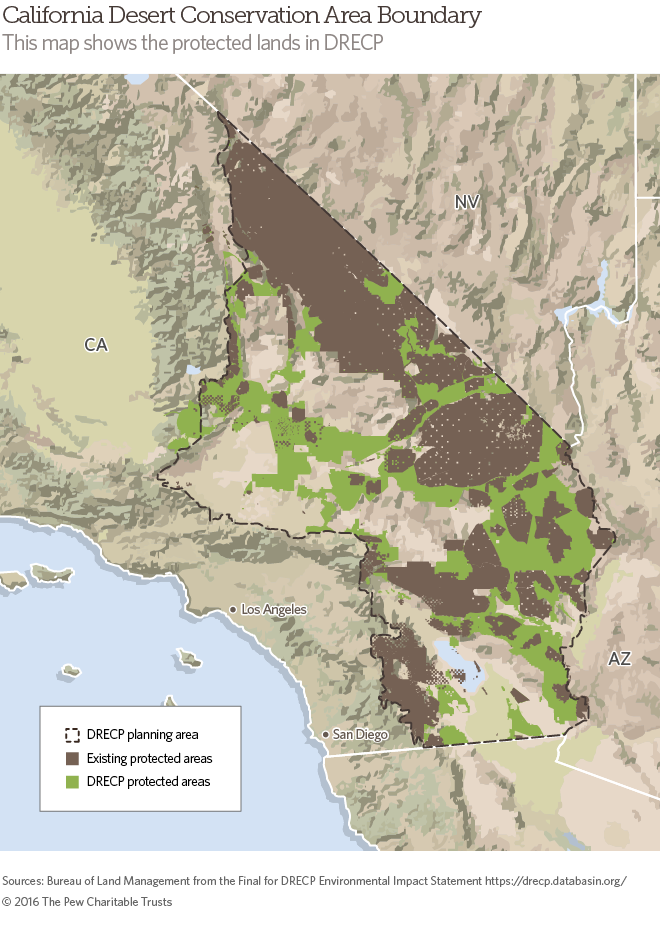BLM Releases Final California Desert Management Plan
Landmark collaboration to provide landscape-level approach to protecting wildlife habitat
 © John Dittli Photography
© John Dittli PhotographyDevelopment projects that once threatened the Silurian Valley area are now prohibited.
Update: On Feb. 2, 2018, the Bureau of Land Management (BLM) filed a notice of intent to reopen the Desert Renewable Energy Conservation Plan. The Pew Charitable Trusts issued a statement expressing disappointment that the BLM would revisit a plan that balances land protections with creation of renewable energy.
The Bureau of Land Management (BLM) issued its final decision Sept. 14 on a sweeping California desert plan that seeks to balance land and wildlife conservation with renewable energy development on public lands. The Desert Renewable Energy Conservation Plan (DRECP), represents a landmark collaboration by California, the federal government, and many other stakeholders to provide a landscape-level approach to protecting wildlife habitat across the desert, which is home to such iconic species as bighorn sheep, desert tortoises, and bobcats.
Since the draft plan was released in 2014, BLM has made a number of improvements to ensure long-term, durable conservation for public lands. These changes include:
- Protecting public land conservation areas and wildlife habitat permanently, not temporarily. As directed by Congress, BLM has identified and designated these landscapes as California Desert Conservation Lands, adding them to the agency’s premier network of protected areas available for enjoyment by everyone.
- Safeguarding critically important places such as the Silurian Valley, where development projects that once threatened the area are now prohibited.
- Strengthening provisions that will further protect certain conservation lands from mining activities through a mineral withdrawal process that will follow the Record of Decision.
- Improving the agency’s inventory of lands with wilderness characteristics by managing many areas to enhance or maintain them. Places such as the Kingston Range, Danby Lake, and the Dublin Hills will now be managed to ensure that their wilderness characteristics are preserved.
In addition to permanently designating new California Desert Conservation Lands, the conservation plan also creates Areas of Critical Environmental Concern that span the desert beyond the California Desert Conservation Lands. These ACECs will protect a variety of wildlife such as desert tortoise, Mojave ground squirrel, and bighorn sheep, while also preserving important cultural and historic sites.

In total, the land and wildlife conservation components of the DRECP mark a major milestone in BLM’s conservation legacy. For example, new California Desert Conservation Lands designated by the DRECP represent more than 10 percent of the agency’s nationwide system. The conservation designations are paired with decisions regarding land that will be available for potential renewable energy development. These development areas will significantly contribute to reaching California’s goal of producing at least 50 percent of its energy from renewable sources by 2030, according to the California Energy Commission.
The DRECP now moves to the implementation stage, where a number of important decisions will be made. One is how and when the BLM will act to withdraw California Desert Conservation Lands from future mining claims. Because of antiquated federal law related to hardrock mining, these new protected areas could still be claimed for mines, although the BLM has promised to begin a separate process that would remove this possibility. While Pew has lauded the DRECP as a valuable blueprint for balancing land conservation with renewable energy development, we have called on the agency to move swiftly to withdraw the appropriate lands from mining.
Ken Rait directs The Pew Charitable Trusts’ western lands initiative.









